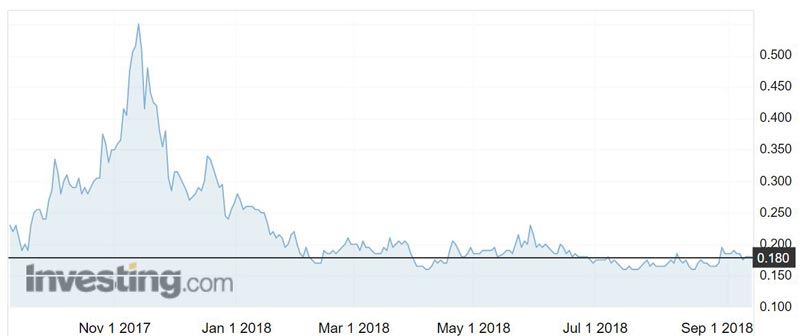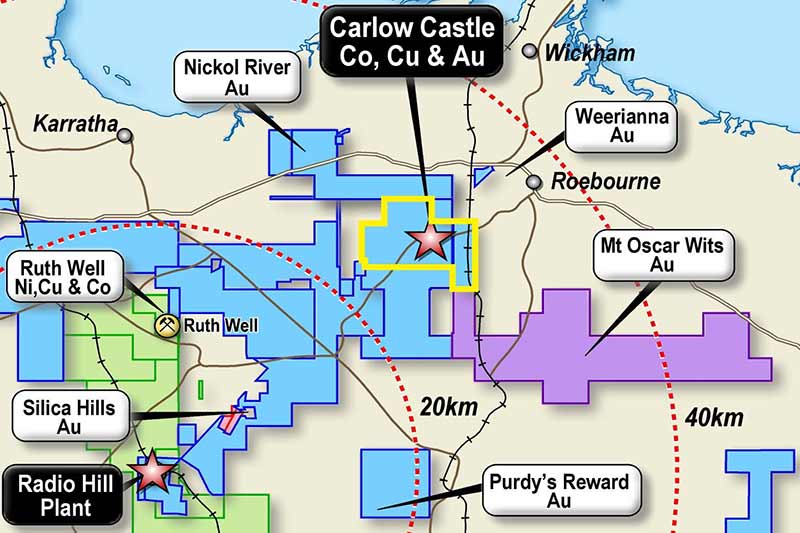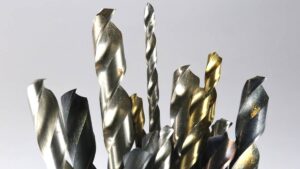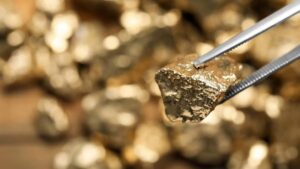Artemis could have Australia’s highest grade cobalt deposit

Pic: Bloomberg Creative / Bloomberg Creative Photos via Getty Images
Artemis has uncovered more high-grade cobalt at its “Carlow Castle” project in WA — and it’s looking more and more likely that the Pilbara explorer could have Australia’s highest-grade cobalt deposit.
Recent drilling at the project delivered a cobalt grade of up to 2.4 per cent from within an area called “Quod Est”.
This isn’t the highest grade found to date though. Artemis previously reported a hit of 6.5 per cent cobalt from the same area.
Artemis also got a new hit of 1 per cent cobalt from an area called “Carlow Castle South East”.
Drilling in both areas also delivered high grades of gold and copper.
Such high cobalt grades were not common at all in Australia, executive director Ed Mead told Stockhead.
“I suppose we can say we’ve got DRC [Democratic Republic of Congo] grades but they’re in Australia,” he said.
The DRC produces more than half the world’s cobalt.

Artemis is working with national science agency CSIRO to determine what exactly it has got its foot on at Carlow Castle, near Karratha in Western Australia.
“At the moment we say it’s shear zone hosted, but we just need more data collection to nail down the exact style of the deposit, which we think is an early stage [volcanogenic massive sulphide] that’s been sheared and basically impregnated with gold,” Mr Mead explained.
Shear zones are the result of a huge volume of rock deformation due to intense stress in the region and they often host ore bodies.
Volcanogenic massive sulphide, or VMS, deposits, are a type of large metal sulphide ore deposit, mainly copper and zinc, that range in size from 4 million to 25 million tonnes.
Though there are some huge ones around like Peak Creek in Canada that host as much as 150 million tonnes.

The large, high-grade Carlow Castle deposit has been sitting untouched for over a century and it’s not because it was in such a remote location nobody could get to it.
“The thing basically outcrops at surface, but it’s covered by a thin veneer of tertiary clay that’s about 1 to 3m thick,” Mr Mead said.
“There’s a public road effectively right next to it, so people have been driving past this thing for over 100 years. This isn’t out in ‘woop woop’, it’s very close to good infrastructure.”
Chief Wayne Bramwell told investors the latest drilling program has set Artemis up well for a resource update in the final quarter of this year.
Artemis delivered its first resource for Carlow Castle back in mid-January and followed that with an update in late January.
- Subscribe to our daily newsletter
- Bookmark this link forsmall cap news
- Join our small cap Facebook group
- Follow us on Facebook or Twitter
The resource currently stands at 4.5 million tonnes at 0.9 grams per tonne (g/t) 0.07 per cent cobalt, 0.4 per cent copper and 1.3g/t silver.
Mr Mead said the initial resource was much lower grade because of the method used to define it.
But Artemis has found a new way of delivering a resource with a much higher cobalt grade.
“So we think that will then better reflect the actual specific grades and allow us a better way to look at optimisation studies,” Mr Mead said.
UNLOCK INSIGHTS
Discover the untold stories of emerging ASX stocks.
Daily news and expert analysis, it's free to subscribe.
By proceeding, you confirm you understand that we handle personal information in accordance with our Privacy Policy.








